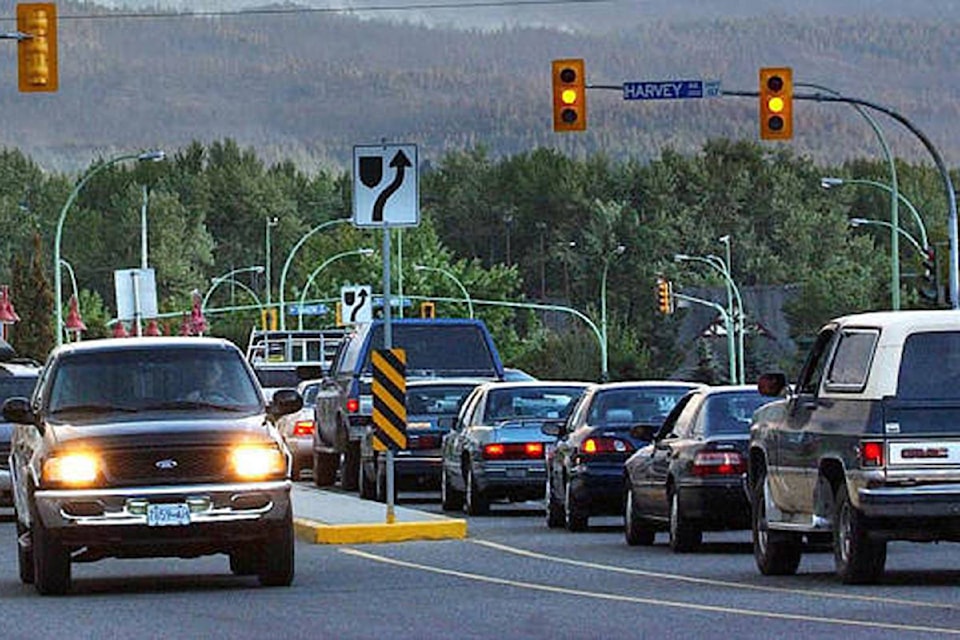The city of Kelowna is de-emphasizing its desire to reduce the number of vehicles on local roads.
In its new Transportation Master Plan, the vision statement has been altered to say the city is using diverse transportation options to help it “shift away” from its car-centric culture rather than “move away” from it, as stated in an earlier version.
“Ultimately, this vision is intended to articulate the community’s aspirations for the future of transportation in Kelowna, and was written to align with Imagine Kelowna’s (vision),” says a report on the master plan going to city council Monday.
Council will be told shifting away from what city staff describe as he Kelowna’s car-centric culture does not mean banning private vehicles altogether.
“Many trips will always be more convenient in a personal vehicle,” says the presentation council will receive.
And staff will also tell council not everyone has to make the switch from private vehicles to other forms of transportation, such as buses, cycling and walking, to benefit from less congestion.
Related story: Alternative transportation driving Kelowna’s new plan
The staff report says 59 per cent of the trips Kelowna residents make are short enough to walk of ride a bike.
“It’s about giving more choices to as many people as possible,” says the presentation.
The accompanying report says for the most part, the 12 goals of the master plan remain the same, but some have been revised slightly to reflect public and stakeholder feedback to provide more clarity.
One goal however has been renamed to “ensure value for public investment,” from its previous wording “to reduce capital and operating costs.”
The 12 goals include:
• Improve safety—Reduce the frequency and severity of collisions involving people who are walking, biking and driving.
• Foster a growing community—Support the city’s growing economy by ensuring the transportation system connects people to jobs and promotes the efficient movement of goods.
• Optimize travel times—Work to ensure optimized and predictable travel times for all modes of transportation (ex: driving, walking, biking, transit).
• Improve travel sources—Ensure residents and visitors have access to multiple means of getting around so they can choose what best meets their needs for a given trip.
• Promote inclusive transportation—Ensure the transportation network serves everyone, including all ages, incomes and abilities.
• Enhance urban centres—Ensure the transportation system supports and encourages sustainable, efficient growth within urban areas.
• Support livable communities—Ensure the transportation system helps support overall neighbourhood livability, quality of life and builds a strong sense of community.
• Be innovative and flexible—Adapt to emerging technologies and a changing climate by creating a transportation system that is resilient and responsive to future change.
• Enhance travel affordability—Reduce the cost of travel for individuals by ensuring a wide range of affordable transportation options are available in Kelowna.
• Improve health—Improve resident health by making it easier for people to be physically active (e.g. biking and walking) and reducing exposure to air pollutants caused by vehicles.
• Protect the environment—Reduce the impact of transportation on our agricultural land, sensitive ecosystems, water, and air.
• Ensure value for public investment—Make efficient use of public funding by maximizing benefits and reducing the costs of transportation infrastructure.
